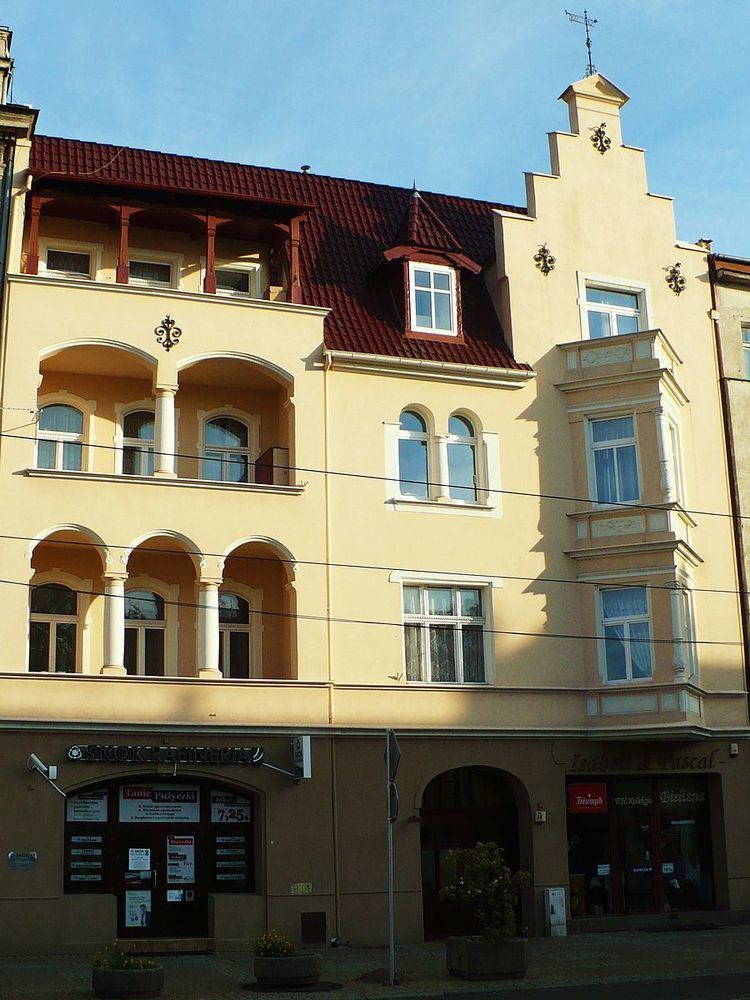Type Tenement Country Poland Opened 1898 Construction started 1897 | Architectural style German Historicism Completed 1898 Floors 4 Architect Fritz Weidner | |
 | ||
Classification N°748678-Reg.A/1582), 16th February 2011. Location Gdańska Street 28, Bydgoszcz, Poland Similar Alexander Timm House, Theonia Reichhardt House in, Julius Grey house in Bydgoszcz, Mix Ernst tenement in Bydgos, August Mentzel Tenement | ||
Thomas Frankowski Tenement is a house located in Bydgoszcz, at Gdanska Street 28.
Contents
Location
The tenement stands on the eastern side of Gdanska Street, near the intersection with Krasinski street.
History
On the site of the tenement was an earlier building, dating from approximately 1875. Actual house was commissioned by landlord Thomas Frankowski, a rentier. It has been built in 1897-1898 by the architect Fritz Weidner. At the time, the address was Danzigerstrasse 156, Bromberg.
Fritz Weidner was a German builder who came to Bydgoszcz at the end of the 19th century. He conducted frantic building activity in the city between 1896 and 1914. From 1912, he lived in the house he built for himself at Gdańska St.34.
In the same area, Fritz Weidner built houses at the following addresses:
- Ernst Mix tenement and movie theatre at Gdanska St. 10 in 1905;
- George Sikorski Tenement at Gdańska St. 31, in 1906;
- Max Rosental Tenement at Gdanska St. 42 in 1905;
- Ernst Bartsch tenement at Gdańska St.79, in 1898;
- House at Freedom Square 3, in 1903.
From 1909, the building housed the headquarters of the Bydgoszcz branch of Józef Madejewski's Institute of Trading Science created in 1892: the organization led educational courses related to geography, trade, modern communications, shorthand and typing.
During interwar period, the edifice housed Seifert & Forster's workshop, specialized in repairing cars and bicycles.
Features
The tenement presents forms of German historicism, in a transitional phase between the eclecticism and secession style.
The whole facade is purposefully designed on asymmetry, which is a means of architectural expression, with stucco decoration for decorative arrangement on various elements: windows, arcade-loggias, bay window, balcony s gables and Peak ornaments.
Inside, original staircase, doors and decorative stained glasses are still preserved.
The building has been put on the Pomeranian heritage list (N°748678-Reg.A/1582), on the 16th February 2011.
